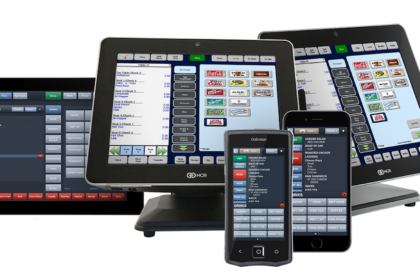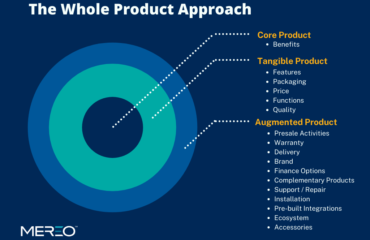
We are all used to using digital payments for a good part of our day to day transactions…When everything goes through smoothly it makes our life so much more simpler and smoother..…But let’s say something goes wrong with say a credit card payment you made at a merchant shop like duplicate billing …or let’s say billing happening twice…or a wrong billing which both you and the merchant need to cancel …
Am sure you will recollect the repeated calls that you had to make to the credit card bank call centre and the innumerable mails to their customer care email address most of which would get a standard revert …What if I tell you UPI 2.0 will address all these issues that we used to face?
Am sure that will get you interested…So let’s get started…
What are POS or Point of Sale Devices?
POS devices are used by local vendors and retail store operators to process payments through debit and credit cards with swipe and QR code facilities. Currently, there are about 5 million POS devices operational across India . About 3.7 million, or more than 70% of these devices have been deployed by banks.
Transactions through these devices are processed by issuer banks, allowing them to levy MDR (merchant discount rate) or transaction fees. This also helps gather transaction data at these access points for customer analytics, especially in underbanked areas.
Before we go further lets understand the various steps involved while making a POS transaction
Stage 1: Authorization
In the authorization stage, the merchant must obtain approval for payment from the issuing bank.
- The cardholder presents their credit card for payment to the merchant at the point-of-sale (POS).After swiping their credit card at a POS terminal, the customer’s credit card details are sent to the acquiring bank (or its acquiring processor).The acquiring bank or processor forwards the credit card details to the credit card network.
- The credit card network clears the payment and requests payment authorization from the issuing bank. The authorization request includes the following:
- Credit card number, Card expiration date, Billing address – for Address Verification System (AVS) validation, Card security code – CVV, Payment amount.
Stage 2: Authentication
In the authentication stage, the issuing bank verifies the validity of the customer’s credit card using fraud protection tools such as the Address Verification Service (AVS) and card security codes such as CVV, CVV2, CVC2, and CID.
- The issuing bank received request and validates the credit card number, checks the amount of available funds, matches the billing address to the one on file and validates the CVV number.
- One the merchant receives authorization, the issuing bank will place a hold on the amount of the purchase on the cardholder’s account. The merchant’s POS terminal will collect all approved authorizations to be processed in a “batch” at the end of the business day.
- The merchant provides the customer a receipt to complete the sale.
Stage 3: Clearing and Settlement
In the clearing stage, the transaction is posted to both the cardholder’s monthly credit card billing statement and the merchant’s statement. It occurs simultaneously with the settlement stage.
- At the end of each business day, the merchant sends the approved authorizations in a batch to the acquiring bank or processor.
- The acquiring processor routes the batched information to the credit card network for settlement.
- The credit card network forwards each approved transaction to \ the appropriate issuing bank.
- Usually, within 24 to 48 hours of the transaction, the issuing bank will transfer the funds less an “interchange fee,” which it shares with the credit card network.
- The credit card network pays the acquiring bank and the acquiring processor their respective percentages from the remaining funds.
- The acquiring bank credits the merchant’s account for cardholder purchases, less a “merchant discount rate.”
- The issuing bank posts the transaction information to the cardholder’s account. The cardholder receives the statement and pays the bill.
What is UPI?
Unified Payments Interface was launched in 2016.
It’s a single -source platform designed for the mobile age that helps with easy integration of various payment platforms. UPI is powered by a single payment API and a set of supporting APIs. A single payment experience for customers (based on seamless system interoperability, comparable to mobile telephony) is a more probable future than a single payments platform.
Since its launch one-and-a-half years ago, Unified Payments Interface (UPI) has allowed full-scale interoperability in transfer of funds. The transaction volumes have grown 123 times from 2 million in December 2016 to 246 million in June 2018, while transaction values grew 58 times from 7 billion INR to 408 billion INR in the same period.
The second version of UPI … UPI2.0 was launched on 16th August 2018,
So how is the UPI Version 2 different from the first
1.Easy resolution of refunds
In all POS transactions till date refunds were not a part of the initial core spec. So, if a merchant needed to refund money to their customer they would need to issue a fresh transaction. The refund was not mapped to the payment made, as it is in net banking (the ARN number is used for this mapping).Now, UPI payments will also follow this mapping so that users and merchants can initiate the refunds from their level itself.
2. Support for invoices
In the present POS payment space, the merchant could only add a description for the amount asked for. The support for invoices in UPI 2.0 means that businesses can use a single platform for sending invoices and receiving payments, instead of using separate mediums for the same.
3.Use of overdraft accounts
Up until now, UPI payments were made only from saving accounts. But with overdraft accounts coming into play, merchants will be able to withdraw money even when there is a cash-deficit in their account. Business, therefore, does not have to stop just because of a temporary issue of insolvency.
4. Capture and hold facility or One-time Mandate
The facility to block certain amount in user’s cards was already present due to a feature called ‘key auth’. Now, merchants accepting payments via UPI will also be able to do the same. Essentially, they will be able to block a certain amount of money on their user’s cards and debit/refund it a later date.
With this feature, UPI has now opened itself up to use from a variety of business verticals (where it may not have been as popular before). Hotels, e-commerce companies, cab-booking services can block amounts on their guests’ credit cards as advance or against security and refund the same once the booking is completed.
Card tokenization and Contactless POS
In January, RBI introduced tokenization of debit, credit, and prepaid cards. Tokenization is a process that will replace actual card details with unique alternate codes called a “token”; this will then be used for card transactions in contactless mode at Point of Sale (POS) terminals, for Quick Response (QR) code payments, etc.
Tokenization: Tokenization allows the credit card number to be replaced with a limited use token to be used for authorization for payments. Limited use token can only be used by a specific device for a specific task to secure the execution and private information
Further, tokenized cards can be used for almost all channels, including transactions involving Near Field Communication (NFC), Magnetic Secure Transmission (MST)-based contactless transactions, in-app payments, QR code-based payments, among others.
So for me the biggest advantage of tokenization will be adapting IOT into the POS space…
Just Imagine the millions and millions of devices that are getting connected and you initiating the payment at your department store from your mobile or your watch or your headset…you name it, it’s all possible technically now and how this will totally change the billing mechanism in stores as we know them today…
To me the day is not far when we will not be having any billing counters in any of our department stores or card swiping devices at restaurants or shops
Till then…



